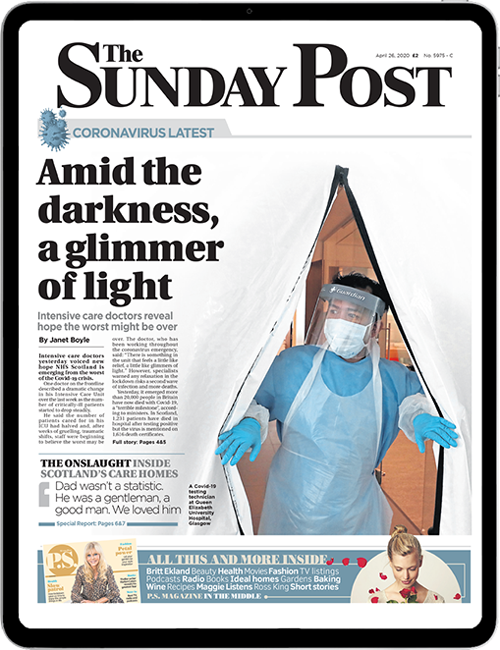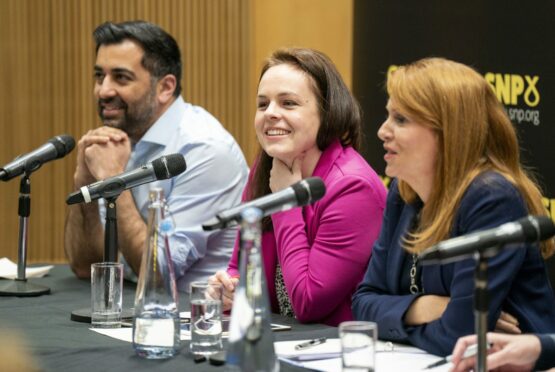
Keir Starmer’s job offer to Sue Gray might not, at first glance, seem to have much bearing on the SNP leadership race but snapping up the mandarin’s mandarin shows Labour means business, and that has implications for the SNP’s next leader.
If you want to look like a future PM, act like you have a foot in the door of No 10 already and appointing Whitehall’s supreme insider definitely helps.
Gray is the hugely respected civil servant who investigated her own bosses’ lockdown parties. In his memoirs, David Laws, a former minister, suggests the formidable public servant actually ran Britain.
If her appointment goes ahead it will send a strong signal that Labour is a government in waiting, the Corbyn years a distant, dismal dream.
Starmer on a roll in England doesn’t mean Labour will steamroller SNP seats though, at least not since that independence referendum pact with the Tories. Until now, the stench of Better Together clung to Labour’s house like a mackerel under the floorboards.
But it wasn’t always so. In the first 10 years of devolution, there were Scottish voters who backed the SNP for Holyrood and Labour for Westminster. Indeed, the proximity of UK general elections bolstered Labour’s Holyrood campaigns. Until a few months before the game-changing 2011 Scottish election, Labour was 10 points ahead of the SNP, the result of a kind of happy hangover from the previous year when Scotland backed Gordon Brown’s Labour at the general election but the UK returned a Conservative Government, propped up by the Lib Dems.
In January 2011, the polls suggested Labour would topple Holyrood’s SNP minority government. It was prevented from doing so by an energetic and positive SNP campaign focused on Salmond’s popularity as a first minister (yes, really) and the impressive “record, team and vision” of his administration.
The incumbents smashed it and returned a majority, astounding even the people at the heart of the campaign. One of these was Geoff Aberdein, who went on to become Salmond’s chief of staff. Now working in the private sector, last week he used social media to warn against complacency.
Aberdein pointed to the result of the Dyce, Bucksburn and Danestone council ward by-election in Aberdeen last month. It might not appear the stuff on which the fate of governments rest. However, the SNP first preference vote fell 10.5% while Labour rose 8.2%. Aberdein warned: “Scale of threat to SNP hegemony laid bare.” Referencing infighting and personal attacks, he counselled: “Voters clearly aren’t amused and Labour are waiting to pounce.”
If Starmer creates significant momentum, Scots may well be caught up in the excitement, unless offered a good reason to stick with the SNP and losses at Westminster will certainly impact on elections at home.
This was inconceivable just two years ago. For almost two decades, the SNP grew its brand as “Scotland’s party”. It infuriated opponents but worked. They built a “big tent” of support (or big bothy as we joked), where leading business brains united with social justice campaigners and crofters found common cause with students.
The departure of John Swinney, one of the last of those big-bothy politicians, underlines the flapping nature of the tent today. He was seen as a business- friendly, middle Scotland sort of guy. Nicola Sturgeon, by contrast, picked a side. She was less interested in business, was firmly Central Belt and embraced trendy issues which, while superficially “progressive” like transgender ideology, have alienated swathes of the population. Even some party members felt no longer welcome.
The leadership election only widens those fissures. Humza Yousaf seeks to continue in the same groove as Sturgeon but appealing to her powerbase still leaves many outside the tent, looking for a home.
Labour, having healed some of its own divisions, will take full advantage.

Enjoy the convenience of having The Sunday Post delivered as a digital ePaper straight to your smartphone, tablet or computer.
Subscribe for only £5.49 a month and enjoy all the benefits of the printed paper as a digital replica.
Subscribe




